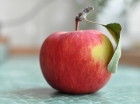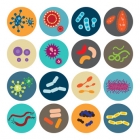Press monitoring
Modified proteins from tick saliva target root of inflammatory diseases
23.2.2022 | Press monitoring
The bodily fluids of dangerous animals such as snakes and spiders are not ones you want to come into contact with if you can help it, but researchers continues to show how they can contain key ingredients for advanced medicines. Saliva from ticks, which spread deadly conditions such as Lyme disease, is another researchers have been studying for...
Artificial intelligence can help optimize fruit cultivars to match consumer taste preferences
21.2.2022 | Press monitoring
Which flavors and chemical compounds make a particular variety of fruit more appealing to consumers can be identified and predicted using artificial intelligence. Breeding for flavor is a difficult task for many different reasons. For one, fruit and vegetable plant breeding programs need to improve several different traits that appeal to both...
New DNA computer assesses water quality
18.2.2022 | Press monitoring
Northwestern University synthetic biologists have developed a low-cost, easy-to-use, hand-held device that can let users know – within mere minutes – if their water is safe to drink. The new device works by using powerful and programmable genetic networks, which mimic electronic circuits, to perform a range of logic functions. Among the...
Gene editing now possible in ticks
16.2.2022 | Press monitoring
Researchers have successfully used CRISPR-Cas9 to edit the genomes of the black-legged tick. To accomplish this feat, they developed an embryo injection protocol that overcame a major barrier in the field. "Despite their capacity to acquire and pass on an array of debilitating pathogens, research on ticks has lagged behind other arthropod...
Nanoparticles made from corn juice inhibit tumor growth in mice
14.2.2022 | Press monitoring
With the ability to be finely engineered to tackle the disease in different ways, nanoparticles hold huge potential when it comes to cancer treatment. Researchers at the Tokyo University of Science have now demonstrated a low-cost and highly promising form of this technology, using corn and water as a starting point for a novel "bionanoparticle"...
Self-cleaning bioplastics repel liquid and dirt
11.2.2022 | Press monitoring
RMIT Ph.D. researcher Mehran Ghasemlou, lead author of the study published in Science of the Total Environment, said the new bioplastic was ideal for fresh food and takeaway packaging. "Plastic waste is one of our biggest environmental challenges but the alternatives we develop need to be both eco-friendly and cost-effective, to have a chance of...
Researchers create strong synthetic enamel similar to natural tooth covering
9.2.2022 | Press monitoring
A team of researchers from Beihang University, the Peking University School and Hospital of Stomatology and the Michigan Institute of Translational Nanotechnology has developed a synthetic enamel with properties similar to natural tooth enamel. Humans have been trying to prevent tooth decay for thousands of years, long before the field of...
Focus on organic transistors for health sensors within living organisms
7.2.2022 | Press monitoring
The currently available bioelectronic devices, such as pacemakers, that can be embedded with the human body are mostly based on rigid components. However, the next-generation devices – which are researched and developed by bioelectronic engineers, organic chemists, and materials scientists – will use soft organic materials that allow comfortable...
Regenerative medicine: Spider silk Janus fibers could attract nerve cells and stimulate their growth
4.2.2022 | Press monitoring
Spider silk has enormous potential in regenerative medicine thanks to being a natural fiber that is tough, stable, and biodegradable. Researchers have now produced double-sided spider silk fibers, which could provide damaged nerve or muscle cells with a platform for growth. One side of the fibers is suitable for cell adhesion, while the other...
Harnessing a natural geochemical reaction to combat antibiotic resistance
2.2.2022 | Press monitoring
Researchers at Lawrence Livermore National Laboratory (LLNL) are exploring alternative treatment options when antibiotics fail. Certain naturally occurring clay deposits have been shown to harbor antimicrobial properties and kill antibiotic-resistant bacteria. These clays have been proposed as a new paradigm for fighting the potentially...































